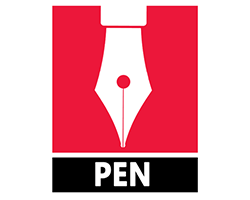- Cardone, L., Castronuovo, D., Perniola, M., Cicco, N., & Candido, V. (2020). Saffron (Crocus sativus L.), the king of spices: An overview. Scientia Horticulturae, 272, 109560. doi: 10.1016/j.scienta.2020.109560teratür [Google Scholar] [Crossref]
- Devi, K., Sharma, M., Singh, M., & Ahuja, P.S. (2011). In vitro cormlet production and growth evaluation under greenhouse conditions in saffron (Crocus sativus L.) - A commercially important crop. Engineering in Life Sciences, 11, 189–194. doi:10.1002/elsc.201000080 [Google Scholar] [Crossref]
- Ding, B., Bai, S., Wu, Y., & Fan, X. (1981). Induction of callus and regeneration of plantlets from the corm of Crocus sativus L. Acta Botanica Sinica, 23, 419–420. [Google Scholar]
- Gantait, S., & Vahedi, M. (2015). In vitro regeneration of high value spice Crocus sativus L.: A concise appraisal. Journal of Applied Research on Medicinal and Aromatic Plants, 2, 124–133. doi:10.1016/j. jarmap.2015.07.003 [Google Scholar] [Crossref]
- Hajyzadeh, M., Olmez, F., & Mahmood Khawar, K. (2020). Molecular approaches to determine phylogeny in saffron. In M. Sarwat & S. Sumaiya (Eds.), Saffron: The age-old panacea in a new light. Amsterdam: Elsevier Inc 57–68. doi:10.1016/B978-0-12-818462-2.00005-X [Google Scholar] [Crossref]
- Halim, R., Akyol, B., Gürel, A., & Bayraktar, M. (2018). In vitro callus induction of saffron (Crocus sativus L.). International Journal of Innovative Science and Research Technology, 3, 696–700. [Google Scholar]
- Homes, J., Legros, M., & Jaziri, M. (1987). In vitro multiplication of C. sativus L. Acta Horticulturae, 212, 675–676. doi:10.17660/ActaHortic.1987.212.114 [Google Scholar] [Crossref]
- Karaoglu, C., Cocu, S., Ipek, A., Parmaksiz, I., Sarihan, E., Uranbey, S., Khawar, K.M. (2007). In vitro micropropagation of saffron. Acta Horticulturae, 739, 229–234. doi:10.17660/ActaHortic.2007.739.28 [Google Scholar] [Crossref]
- Mazri, M.A., Meziani, R., El Fadile, J., & Ezzinbi, A. (2016). Optimization of medium composition for in vitro shoot proliferation and growth of date palm cv. Mejhoul. 3 Biotech, 6, 1–11. doi:10.1007/s13205-016-0430-x [Google Scholar] [Crossref]
- Menia, M., Iqbal, S., Zahida, R., Tahir, S., Kanth, R.H., Saad, A.A., & Hussian, A. (2018). Production technology of saffron for enhancing productivity. Journal of Pharmacognosy and Phytochemistry, 7, 1033–1039. [Google Scholar]
- Mir, J.A., Ahmed, N., Wani, S.H., Rashid, R., Mir, H., & Sheikh, M.A. (2010). In vitro microcorms production in saffron (Crocus sativus L.). In: Souvenir and abstracts National seminar on technological innovations in saffron, November 25-26. pp. 20. [Google Scholar]
- Mir, J.A., Ahmed, N., Shaf, W., Rashid, R., Mir, H., & Sheikh, M.A. (2014). In vitro development of microcorms and stigma like structures in saffron (Crocus sativus L.). Physiology and Molecular Biology of Plants, 16, 369–373. [Google Scholar]
- Moradi, A., Zarinkamar, F., Caretto, S., & Azadi, P. (2018). Influence of thidiazuron on callus induction and crocin production in corm and style explants of Crocus sativus L. Acta Physiologiae Plantarum, 40, 185. doi:10.1007/ s11738-018-2760-2 [Google Scholar] [Crossref]
- Murashige, T., & Skoog, F. (1962). A revised medium for rapid growth and bioassay with tobacco tissue cultures. Physiology Plant, 15, 473–479. doi:10.1111/j.1399-3054.1962.tb08052.x [Google Scholar] [Crossref]
- Namin, M.H., Ebrahimzadeh, H., Ghareyazie, B., Radjabian, T., & Namin, H.H. (2010). Initiation and origin of stigma-like structures (SLS) on ovary and style explants of saffron in tissue culture. Acta Biologica Cracoviensia. Series Botanica, 52, 55–60. doi:10.2478/ v10182-010-0007-7 [Google Scholar] [Crossref]
- Piqueras, A., Han, B.H., Escribano, J., Rubio, C., Hellin, E., & Fernandez, J.A. (1999). Development of cormogenic nodules and microcorms by tissue culture, a new tool for multiplication and genetic improvement of saffron. Agronomie, 19, 603–610. doi:10.1051/agro:19990704 [Google Scholar] [Crossref]
- Raja, W., Zaffer, G., & Wani, S.A. (2007). In vitro microcorm formation in saffron (Crocus sativus L.). Acta Horticulturae, 739, doi: ActaHortic.2007.739.37 [Google Scholar] [Crossref]
- Salwee, Y., Wani, S.A., & Lone, A.A. (2010). Tissue culture: A tool for corm production in saffron. In: Souvenir and abstracts National seminar on technological innovations in saffron, November 25-26. pp. 19 [Google Scholar]
- Sharma, K.D., & Piqueras, A. (2010). Saffron (Crocus sativus L.) tissue culture: Micropropagation and secondary metabolite production. Functional Plant Science and Biotechnology, 4, 15–2 [Google Scholar]
- Sharma, K.D., Rathour, R., Sharma, R., Goel, S., Sharma, T. R., & Singh, B.M. (2008). In vitro cormlet development in Crocus sativus. Biologia Plantarum, 52, 709–712. doi:10.1007/s10535-008-0136-y [Google Scholar] [Crossref]
- Sharma, S., Sudheer Pamidimarria, D.V.N., Vijay Ananda, K.G., & Reddy, M.P. (2011). Assessment of genetic stability in micropropagules of Jatropha curcas genotypes by RAPD and AFLP analysis. Industrial Crops and Products, 1003–1009. doi: 10.1016/j.indcrop.2011.03.008 [Google Scholar] [Crossref]
- Small, E. (2016). Saffron (Crocus sativus) – The eco-friendly spice. Biodiversity, 17, 162–170. doi:10.1080/ 14888386.2016.1246383 [Google Scholar] [Crossref]
- Vahedi, M., Kalantari, S., & Salami, S.A. (2014). Factors affecting callus induction and organogenesis in saffron (Crocus sativus L.). Plant Tissue Culture and Biotechnology, 24, 1–9. doi:10.3329/ptcb.v24i1.19184 [Google Scholar] [Crossref]
- Zaffar, G., Ahmad, M., Shahida, I., Razvi, S.M., Habib, M., & Ahmad, A. (2014). Effect of paclobutrazol and sucrose on in vitro corm formation in saffron (Crocus sativus). Journal of Cell and Tissue Research, 14, 4069–4072. [Google Scholar]
- Zeybek, E., Önde, S., & Kaya, Z. (2012). Improved in vitro micropropagation methods with adventitious corms and roots for endangered saffron. Central European Journal of Biology, 7, 138–145. doi:10.2478/s11535-011-0102-0 [Google Scholar] [Crossref]
|

